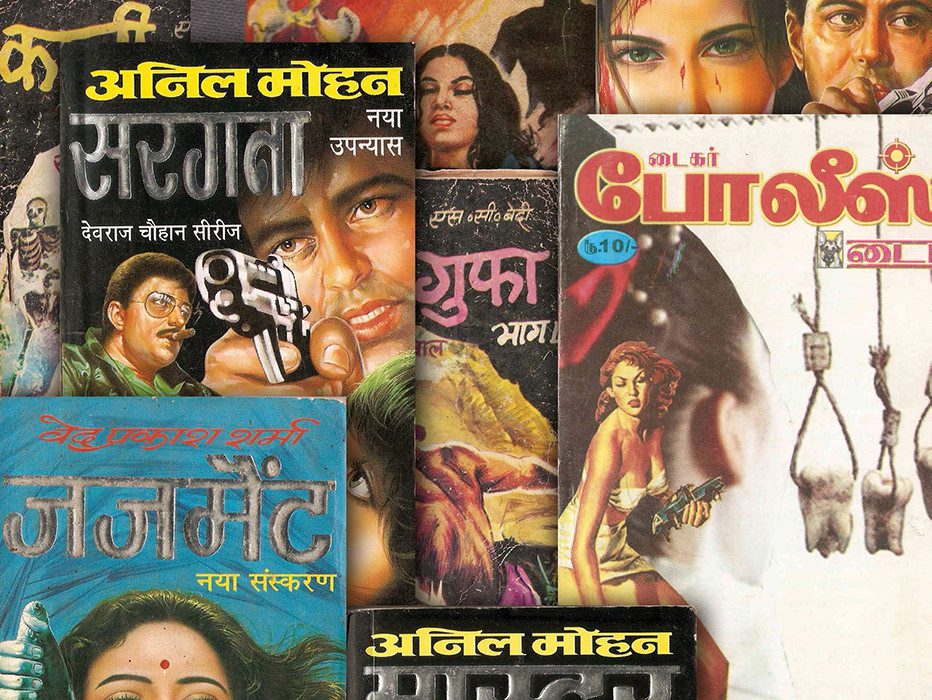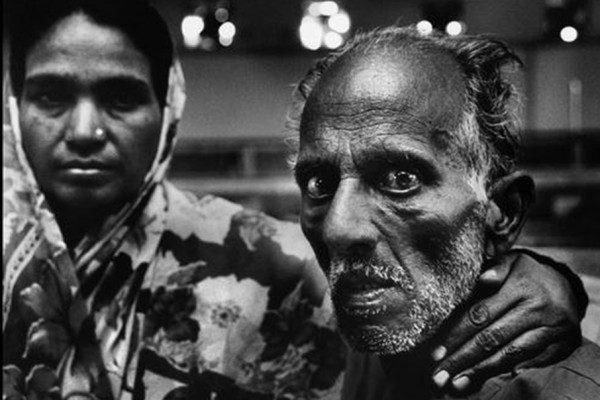The thrills and the frills of gore, lust and violence. Poornima Joshi dives into her memory to celebrate an undying love.
Perhaps it all started when cub reporters in cash-starved newspaper offices were perennially on call for menial assignments that didn’t interest the seasoned hacks. That, and late night duties when everyone else was qualified to celebrate – Christmas and New Year’s eve, Independence and Republic Day when the Press Club was the only establishment in the Capital City to dare dish out their daily quotas of Old Monk and XXX Rums to poorly-paid journalists.
Resenting the smug seniors thronging the haloed precincts of the Press Club, junior city reporters spent those interminable nights in uncharacteristically silent newsrooms; on the phone with bored cops who kept us informed – a robbery in Mangolpuri (not really a ‘spot’ i.e. crime scene worth visiting), a brawl in Nangloi (again, ‘too downmarket’ for a visit), and so on. You had to keep watch, just in case. Politics, governments falling, PMs resigning et al were the “bureau’s baby” but we, the lowly lot in the city section, were mostly required to look out for big and small crime scenes – a VIP kidnapped/assassinated/got drunk in a bar or any sensational rape/murder/robber-cum-rape/murder, and so on.
In the pre-internet era, the intervals between checking on the crime scene with the Police Control Room (PCR) and Sub Inspector (SI) Press were spent gossiping with our lowly counterparts from other newspapers (TV was still in its infancy), finishing stories that no one else wanted to file, smoking away with the overworked subs on the desk or, in my case, sprawled in two chairs adjusted to accommodate a semi-reclining posture and reading. From Victorian romances (appropriately hidden in hideous book covers), 19th Century Russians, a few Americans and the latest stars on the still evolving Indian English writing genre, my focus shifted almost entirely to those specialising in psychological thrillers, the blood and the gore of crime and suspense writing.
Not that this was a genre unfamiliar to those of us from “mofussil” towns who grew up on such noir as Chandrakanta Santati where the skill of Eyari(detection) was honed to perfection by its creator, the legendary Babu Devaki Nandan Khatri. From the sublime heights of Chandrakanta to the lewd adventures of Colonel Ranjit and the inescapable delights from Surendra Mohan Pathak’s stable which went by titles such as Hotel Mein Khoonor, Reporter Ki Hathya, there was no dearth of adventures to explore from the neighbourhood shop, especially when one could borrow them for a princely sum of two rupees near Nani’s home in Dehradun.
But these were areas secretly explored while trailing my eldest brother in his literary quest. As he refused to lend his books to anyone, especially to the annoying little sister, I had fashioned myself into a little spy, exploring his hideouts and fishing out not just the jasoosi treasures but such absolutely forbidden treats as Celestial Bed and Fanny. But somewhere in my teens, the magic of Jane Austen and Georgette Heyer lured me away from the brother territory where, by then, Atlas Shrugged had made an appearance.
The change in scene literally from the leisurely afternoons of my teens to the feverish pace of the newsrooms was as sudden as my interest in the predictability of Miss Marple, the genius of Sherlock Holmes and, to the point of obsession, the lyrical telling of the tales of by far the most romantic figure among my favourites, Baroness P. D. James’s poet detective Adam Dalgliesh.
I meandered seamlessly in this world as late nights in newsrooms kept transporting me to the capital city’s underbelly, mostly for stories that would, at best, be dismissed in double columns on Page 2. ‘Family of Dwarves Slain’ does not quite capture the macabre vividness of a crime scene in an East Delhi slum cluster on one such newsroom night. The police had arrived by the time a handful of reporters and photographers made our way through the dark by-lanes and stumbled into the decrepit, two-storied home, almost blinded by the floodlights illuminating every corner of the bloodied scene.
Congealing clots of blood choked the drain from the bathroom where two tiny bodies were lying, throats slit and stab wounds gaping through the blood-soaked clothing. Two more in the room across the little space where policemen and reporters stood, shaking hands and promising a drink later or the next day at the Press Club. The grotesque banality of the conversation that floated was symptomatic of the investigation that followed. As I remember, the Investigating Officer(IO) first announced the suspect to be another member of the family whose stabbed body was later discovered in a trunk upstairs. A senior member of the Delhi’s police force was later quoted, presumably by way of reprimand: “You’re not supposed to miss even a pubic hair, and you left a whole body!”
Of course, I was too big to join in the bonhomie and camaraderie that was forged over similar wisecracks but the lure of the macabre was undeniable. The routine charade of covering police investigations in real life never as exciting as the adventures of Dr Kay Scarpetta and her endearingly crude sidekick Pete Marino in grey, snowing Richmond or Detective Inspector John Rebus in Edinburgh. Naturally, I kept following their tracks much after having graduated from the ranks of crime reporters and quietly mourned when Ian Rankin retired the alcoholic, sour Rebus in 2006. And while I haven’t got my hands on it yet, it is equally heartening to hear about his recall from retirement six years later, in 2012, to assist his protégée Siobhan Clarke to unravel yet another case in Standing in Another Man’s Grave.
Many more have arrived since then and filled spaces in my bedroom book-shelves. Inspector Kurt Wallander of Ystad in his gloomy, freezing landscape hooked me right from the start; Faceless Killers was a winner – a farmer bludgeoned to death and his wife strangled, noose dangling on a cold night. Before The Frost and The Man Who Smiled kept the Wallander magic alive. Then there’s Harry Hole who made his appearance in titles that immediately filled my heart with joy, The Bat, The Phantom and so on. Stieg Larsson, naturally, is high up in my private ecclesiastical order with his peculiar flourish for the grim and the morbid and his brilliant, troubled character LisbethSalander.
There are others, and I am still investigating; while witlessly pouring over already solved mysteries over and over again. I create characters in my head and ponder over locating them in various landscapes on my daily drives to office and back. I think of them while I pore over snotty academic copy and think up plots in my mental breaks from tedious editing. The detectives are my private relief. But with the possible exception of Feluda, I am yet to discover a single fellow countryman who fits the bill. Then I fantasise about creating one myself. And the thought keeps me going till I find yet another character to go to bed with.














